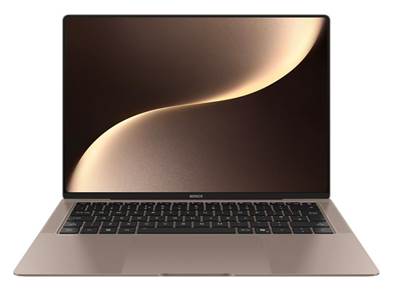Laptop
batteries often frustrate users when they lose capacity quickly. Understanding
the reasons behind this issue is key to managing and prolonging battery life.
By identifying the main factors responsible for rapid battery decline, users
can take preventative measures to maintain their laptop’s functionality. This
article dives into the causes of fast battery capacity drops and provides
insights into how to mitigate these effects. Learning about these causes and
solutions helps in optimizing battery performance, ensuring that your laptop
remains a reliable companion throughout its lifespan. For instance, modern
devices such as the HONOR MagicBook Art 14 2025 in UK incorporate efficiency-focused hardware and
smart charging technology that can help slow battery wear when used with good
charging habits.

Main Causes of Rapid Battery Capacity Drop
Battery Age & Charge Cycles
When
it comes to battery life, age and charge cycles play significant roles.
Lithium-ion batteries, common in laptops, degrade with time and usage. Each
complete cycle, where a battery goes from 100% to 0%, reduces overall capacity.
Over time, as cycles accumulate, the battery’s ability to hold a charge diminishes. This aging process is inevitable,
yet predictable. Users must understand that each cycle takes a toll on the
battery, and as it ages, it shows signs of decline like reduced runtime.
Regularly using a laptop plugged in can minimize cycle usage, but won’t stop the aging process. Recognizing this
allows users to anticipate changes in battery performance over time.
Deep Discharges & Overcharging
Deep
discharges, where the battery empties completely, strain the battery,
accelerating capacity loss. Conversely, leaving a laptop plugged in too long
leads to overcharging, which also degrades the battery. Balancing the charge
between moderate levels is crucial. Users often overlook how everyday habits,
such as running batteries too low or consistently charging them to 100%,
negatively impact long-term health. Reducing instances of deep discharges and
avoiding constant overcharging can improve battery longevity. These adjustments
in charging habits enable users to maintain better battery condition and avoid
frequent replacements.
Resource-Heavy Software & Background Processes
Resource-heavy
software significantly impacts battery lifespan by triggering faster energy
depletion and more frequent charging cycles. Background processes, often
unnoticed, similarly consume power without user interaction. Applications that
demand high CPU or GPU usage force the battery to work harder and wear out
faster. By consciously monitoring and managing these processes, users can
mitigate unnecessary battery drain. Regularly reviewing open applications and
shutting down non-essential ones can enhance battery conservation. This careful
management ensures batteries last longer and perform optimally over time.
Power Settings & Driver Issues
Laptops
often experience battery issues stemming from improper power settings and
outdated drivers. Manufacturers include power-saving features to prolong
battery life, but incorrect configurations can lead to rapid consumption.
Similarly, outdated drivers can cause inefficiencies, consuming more energy
than necessary. Regular updates and settings adjustments are critical in
maintaining battery effectiveness. Users must ensure their laptops operate on
optimal settings. Checking power management settings and scheduling regular
driver updates helps maintain efficiency, contributing to extended battery
health.

How to Identify Declining Battery Health?
Run Battery Report Tools
Battery
report tools are essential for understanding battery health. These tools
provide comprehensive insights into cycles, capacity changes, and overall
performance. Running a report enlightens users on how the battery’s health has
transformed. Such tools offer detailed analyses, highlighting aging signs or
unusual behaviors. By examining these reports, users can confirm if declining
performance stems from natural wear or other underlying issues. This proactive
approach empowers users with information to make informed decisions about
battery care and replacement options.
Monitor Runtime Changes
Keeping
an eye on runtime changes gives a clear indication of battery decline. A sharp
decrease in time between charges often signals capacity loss. Timing how long a
fully charged battery lasts helps in tracking gradual depreciation or sudden
drops. Observing these changes enables users to preemptively address issues
before severe degradation occurs. This vigilance in monitoring translates into
timely actions, ensuring sustained device usability without unexpected
interruptions. Recording runtimes can serve as a historical reference for
future evaluations.
Observe Sudden Charge Drops
Sudden
charge drops act as red flags for battery issues. A battery suddenly plummeting
from a high charge percentage to a low one suggests underlying problems. This
anomaly often points to capacity degradation or calibration errors. Recognizing
these patterns helps determine whether a battery requires recalibration or
replacement. Addressing these hiccups promptly minimizes disruptions and
prolongs overall battery life. By paying attention to these signs, users can
implement necessary corrective measures, enhancing battery reliability over its
lifespan.
Best Practices to Slow Capacity Decline
Keep Charge Between 20%-80%
Maintaining
a battery charge between 20%-80% can notably slow
down capacity decline. This range minimizes strain, reducing cycle consumption.
Avoiding extreme charges—either full or empty—preserves battery health.
Adjusting usage habits to limit charges within this zone curtails ongoing wear
and extends battery life. This simple yet effective practice ensures the
battery remains in prime condition, delaying performance deterioration.
Following this guideline translates into tangible improvements in longevity,
optimizing both usage and charging patterns.
Use Efficient Power Modes & Close Idle Apps
Using
efficient power modes and closing idle applications significantly enhances
battery performance. Power-saving modes reduce energy usage, extending
runtimes. Closing unused apps prevents unnecessary consumption, preserving
capacity. These modes automatically adjust settings to balance performance and
efficiency, protecting battery health proactively. Implementing these measures
keeps the laptop running smoothly while conserving energy. Users benefit from
prolonged usage time without sacrificing essential functionality, offering both
environmental and efficiency advantages in everyday operation.
Update Drivers & OS
Regular
updates to drivers and operating systems ensure optimal battery performance.
Updates address bugs and improve efficiency, reducing unnecessary power drain.
Keeping systems current aligns with manufacturers’ improvements and
optimizations. Neglecting updates risks potential conflicts and inefficiencies,
adversely affecting battery life. Scheduling updates to coincide with minimal
usage periods minimizes interruptions while leveraging enhancements. This
practice ensures maximum efficiency, enabling batteries to operate under
optimal conditions, resulting in extended life and consistent performance.
Calibrate Battery Occasionally
Occasional
battery calibration helps maintain accuracy in charge readings, ensuring
reliable performance metrics. Calibration involves fully charging, discharging,
and recharging the battery, aligning software with actual capacity. This
process corrects discrepancies, preventing unexpected power drops. Conducting
calibration at regular intervals fosters trustworthy indicators of health,
contributing to informed maintenance decisions. Adhering to this routine
results in enhanced reliability and longevity, minimizing disruptions caused by
inaccurate battery readings. Users maintain confidence in their device’s
endurance by employing this straightforward technique.
Conclusion
Laptop
battery longevity hinges on understanding the causes behind rapid capacity
decline and implementing preventative measures. By identifying key factors,
such as battery age, charging habits, and power settings, users can take
actionable steps to enhance battery performance and durability. Regular
monitoring of battery health provides insights into when intervention is
needed, ensuring continued usability. Best practices, including efficient
charging and timely updating, can extend battery life significantly. With these
strategies, users maintain the functionality and reliability of their laptops,
safeguarding against the frustration of premature battery failure.



